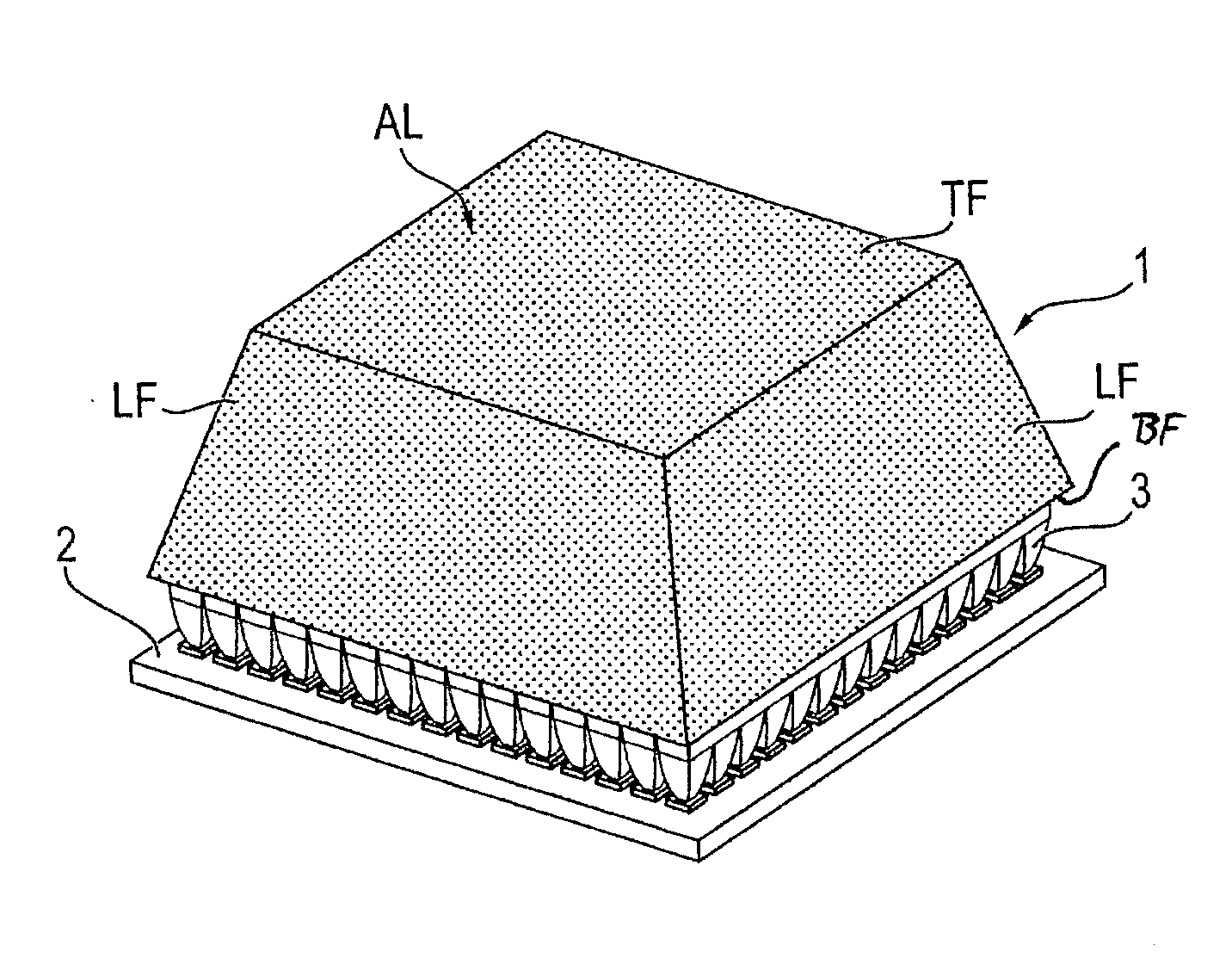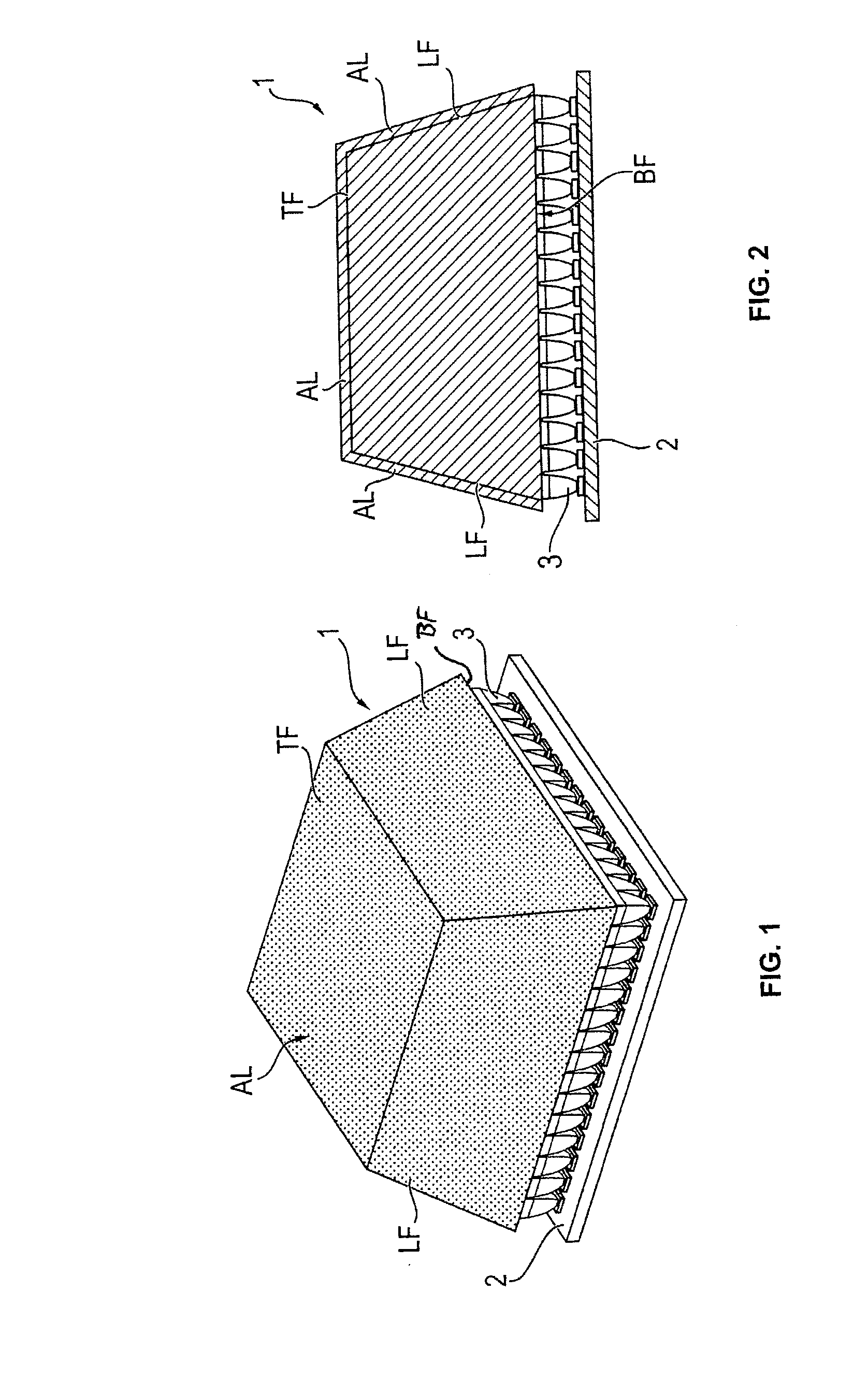Gamma ray scintillation detector preserving the original scintillation light distribution
a technology of scintillator and light distribution, applied in the direction of instruments, radiation measurement, measurement devices, etc., can solve the problems of significant losses at lower energies, scintillator based gamma ray detectors have a poorer energy resolution than solid state high purity germanium detectors, and thermal background noise, so as to reduce the range of allowed maximum half light acceptance angles
- Summary
- Abstract
- Description
- Claims
- Application Information
AI Technical Summary
Benefits of technology
Problems solved by technology
Method used
Image
Examples
Embodiment Construction
[0059]FIG. 1 shows an embodiment, wherein the scintillator 1 is a mono crystal having a truncated pyramid shape with all faces except the bottom base face BF (better visible in FIG. 2) covered with an absorbing layer AL and wherein a scintillation-light-incidence-angle-constraining (SLIAC) element, e.g. an array of concentrators 3, is optically coupled to the scintillation light transparent bottom face of the truncated pyramid mono crystal scintillator in order to guide the scintillation light onto a position sensitive photo sensor 2. Two of four lateral faces LF and the top base face TF are visible. The area of the top base face TF is smaller than the area of the bottom base face BF.
[0060]At this point, we also like to note that when referring to optic coupling of optical elements, we refer to the use of an optical medium such as silicone, grease or gel, thermal plastic or any other suitable material with a refraction index that reduces internal reflections, especially reflections ...
PUM
 Login to View More
Login to View More Abstract
Description
Claims
Application Information
 Login to View More
Login to View More - R&D
- Intellectual Property
- Life Sciences
- Materials
- Tech Scout
- Unparalleled Data Quality
- Higher Quality Content
- 60% Fewer Hallucinations
Browse by: Latest US Patents, China's latest patents, Technical Efficacy Thesaurus, Application Domain, Technology Topic, Popular Technical Reports.
© 2025 PatSnap. All rights reserved.Legal|Privacy policy|Modern Slavery Act Transparency Statement|Sitemap|About US| Contact US: help@patsnap.com



